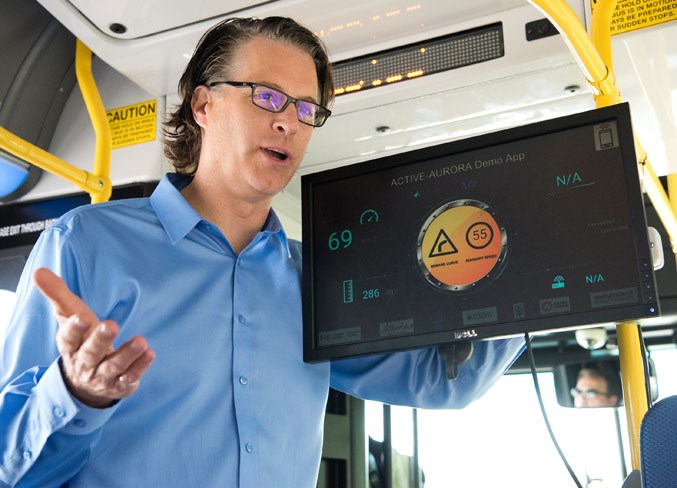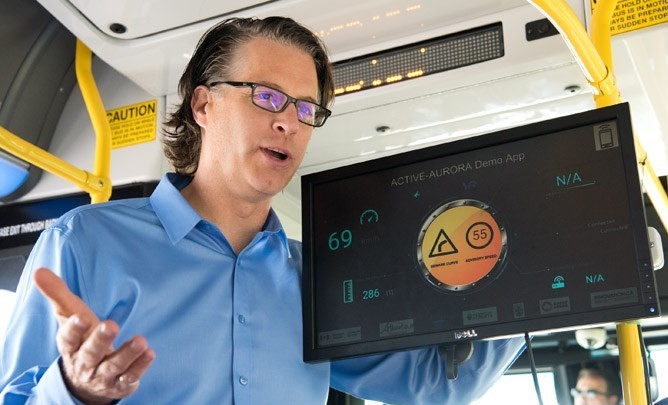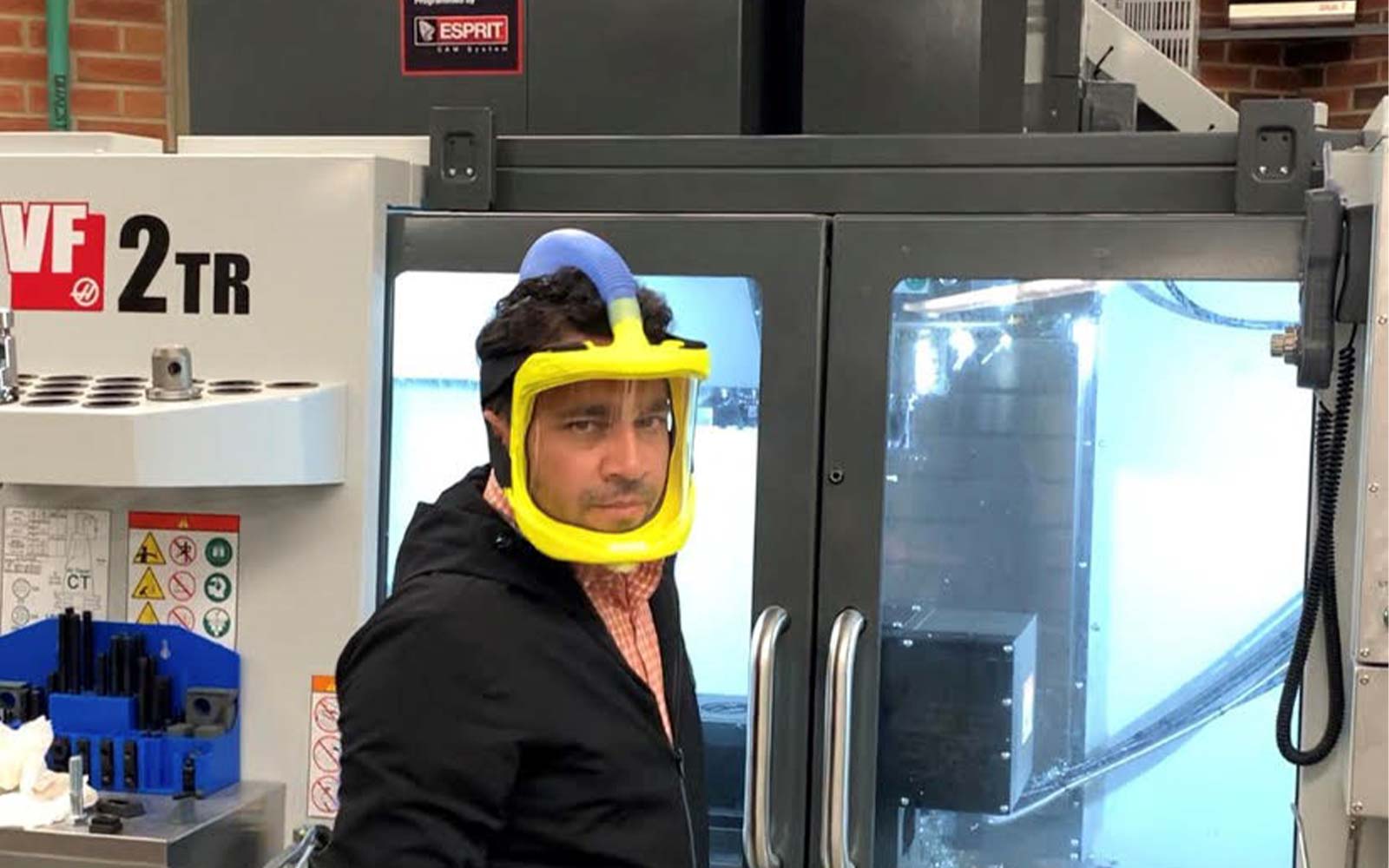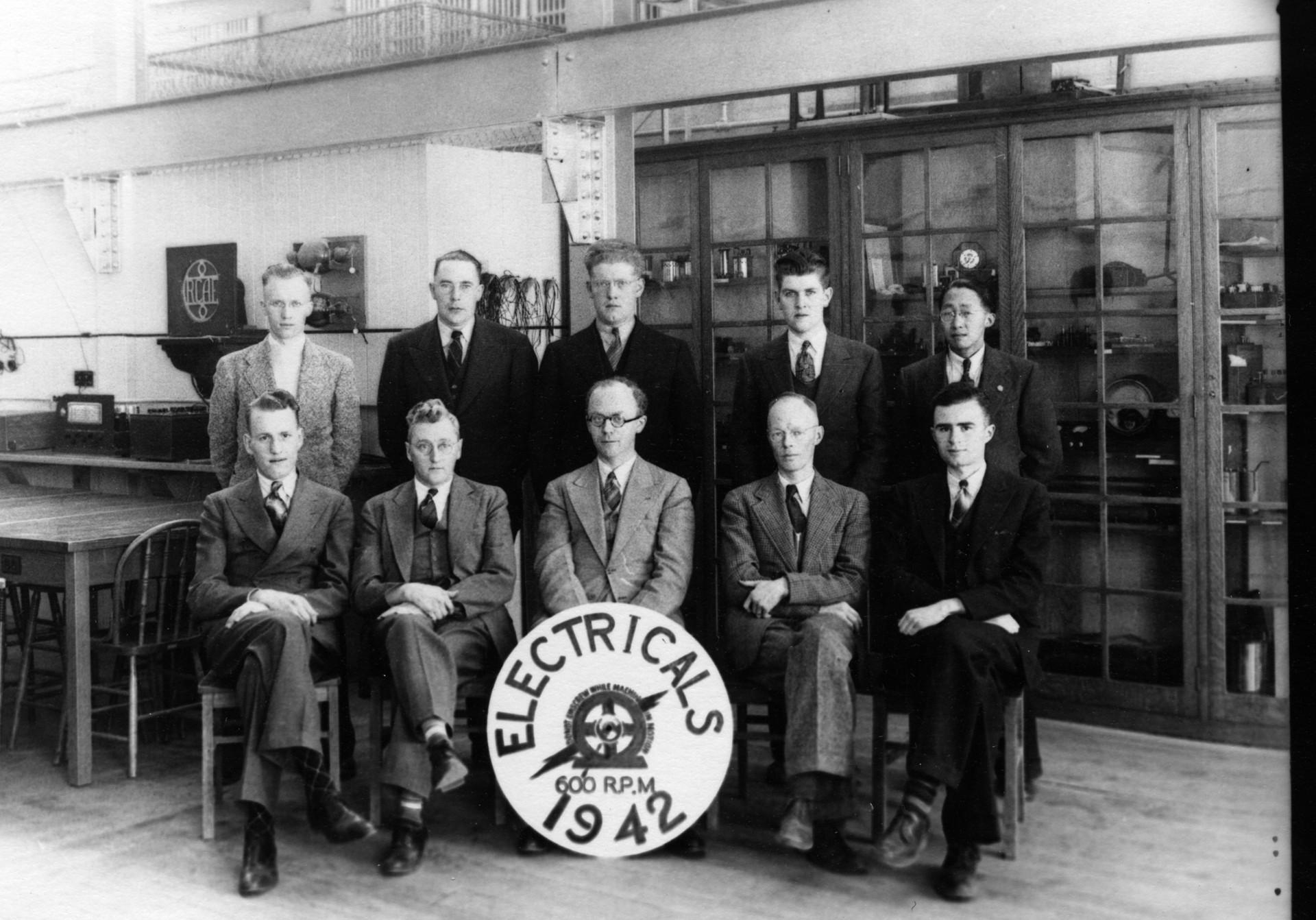Photo courtesy of Stantec
The Right Direction: Towards Smarter, More Sustainable Travel
Smart traffic infrastructure and even driverless cars are closer to your morning commute than you might think. And if Rod Schebesch, P.Eng., is right, they’ll be part of a revolution in how we get from point A to point B—and how we treat our planet.
It’s called smart mobility technology.
When companies like Edmonton-headquartered Stantec combine it with transportation engineering, smart mobility offers tremendous opportunities to solve many of the world’s problems.
“Since the time when people changed from riding horses to driving cars, this is the biggest shift in defining mobility,” says Schebesch, who leads Stantec’s smart mobility practice. “I think this is going to change everything. Connected and automated vehicles will optimize the movement of people and goods in our existing transportation networks.”
Smart mobility is automated, connected, electric, and shared. “We like to include the word accessible, too,” explains Schebesch.
He’s a senior vice–president and the North America transportation sector leader for the worldwide consulting firm. He’s helped put his employer at the forefront of the development and implementation of smart mobility and the deployment of automated vehicles.
A founding partner of the ACTIVE-AURORA test bed in Edmonton, Stantec has worked with the University of Alberta and other project partners for six years, focusing on connected and automated vehicles. Also involved in ACTIVE-AURORA are the University of British Columbia, the City of Edmonton, the Government of Alberta, and the Government of Canada.
Building on the success of the project, Stantec is also leading a new initiative in Edmonton. The Smart Mobility Incubator will improve the safety and efficiency of the existing road network, Schebesch expects.
And there’s much more to come. Smart mobility will revolutionize how people move around cities throughout the world—and even change the way buildings are designed and constructed, he says.
“It will change the way we engineer, plan, and build transportation infrastructure and communities. It will also have a profound effect on things like safety, mobility, health, and the environment.”
Smart mobility should, for example, dramatically reduce vehicle collisions and traffic deaths. In North America, more than 40,000 people die in traffic every year because of human error. Schebesch thinks the number could drop by as much as 90 per cent, once everything is connected and automated.
Smart mobility encompasses something called mobility as a service (MaaS), too. It links mobility solutions onto a single platform. “For a single fare, MaaS can provide people a door-to-door trip as efficient as using their own cars. Once achieved, this will challenge our existing mobility habits,” he says.
“If we implement smart mobility using digital, data-driven planning and engineering, and with a vision for the future, I think we can use this technology to enhance transit and make mobility as a service a tangible alternative to single-occupant vehicle use.”
And that, Schebesch points out, is a major step towards making life on Planet Earth sustainable.
“The status quo of how we live on the planet is not sustainable. My goal is to drive this shift in mobility to save tens of thousands of lives a year and to combat climate change. When I started my career, I never imagined I would be part of such a profound and rewarding opportunity to make a real difference, and I’m humbled to be a part of it.”
Rod Schebesch, P.Eng. demonstrating mobility as a service (MaaS).

Photo courtesy of Stantec



